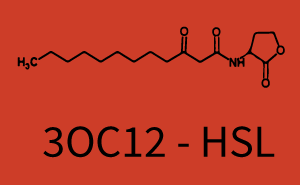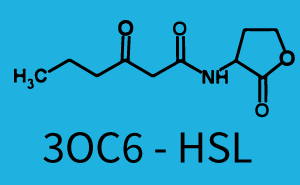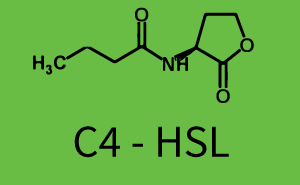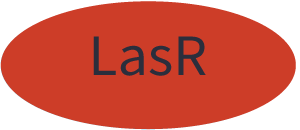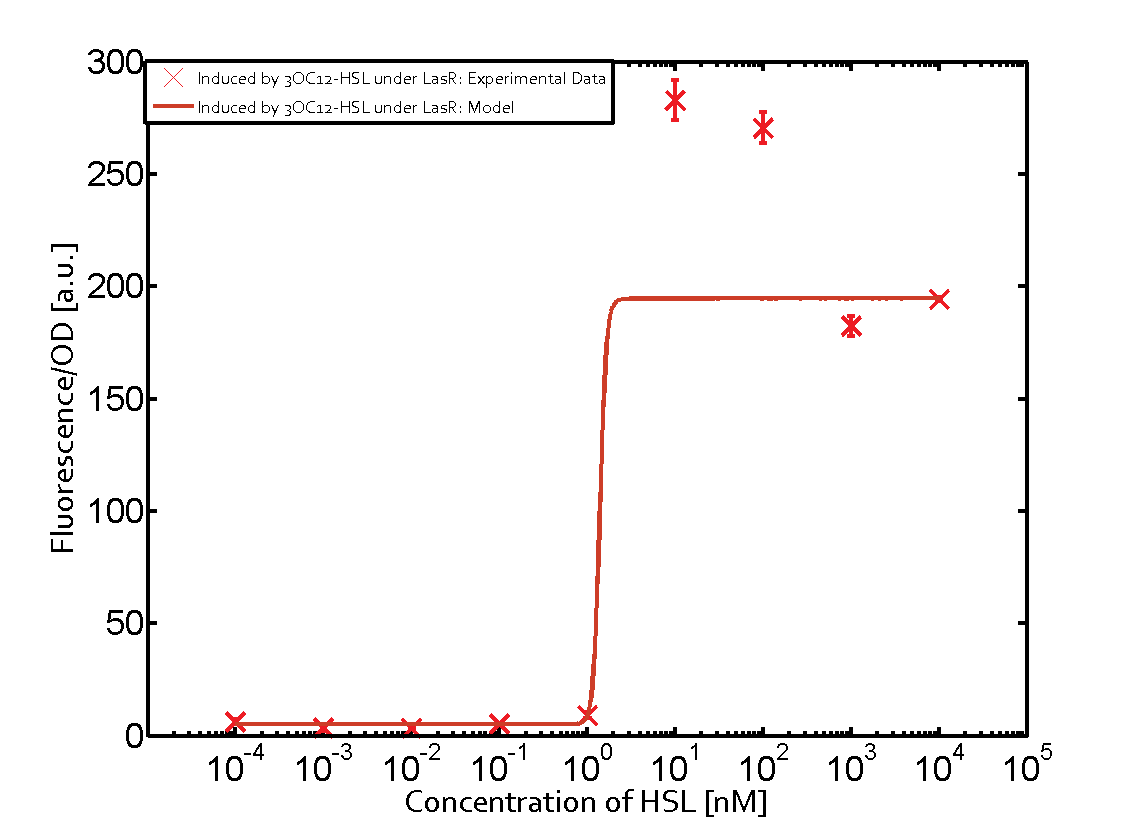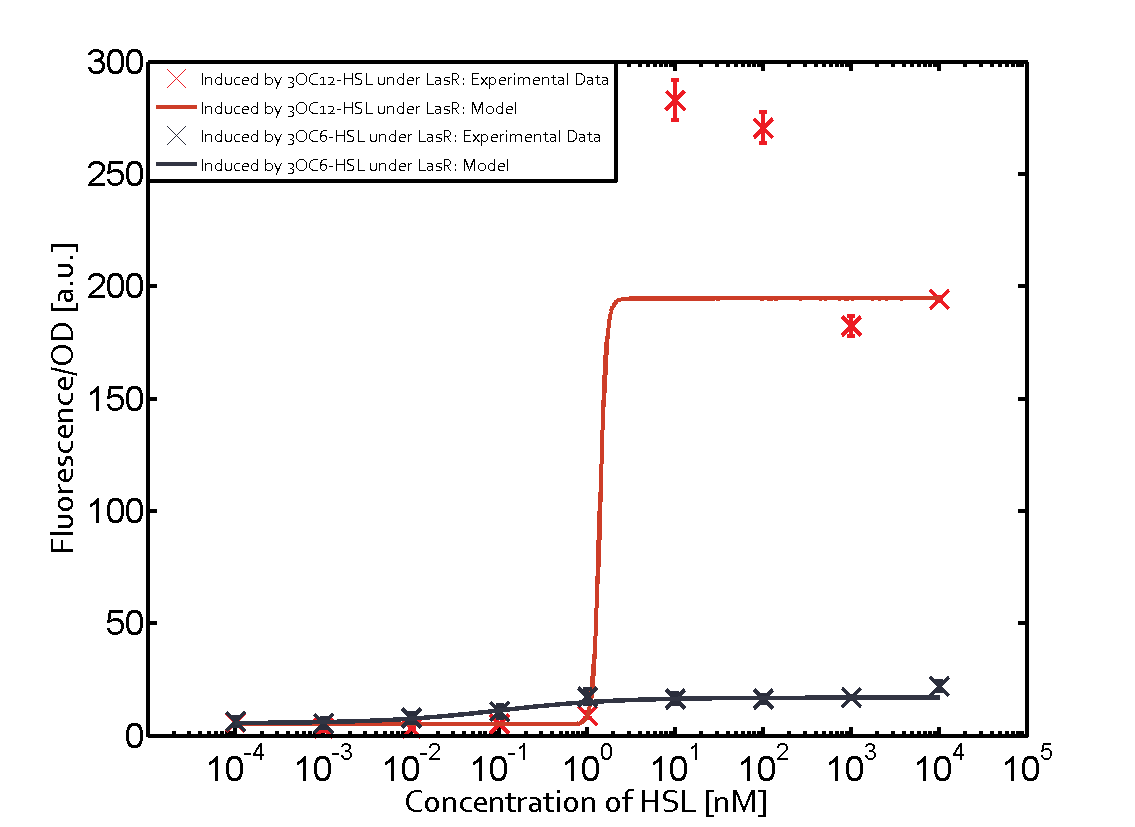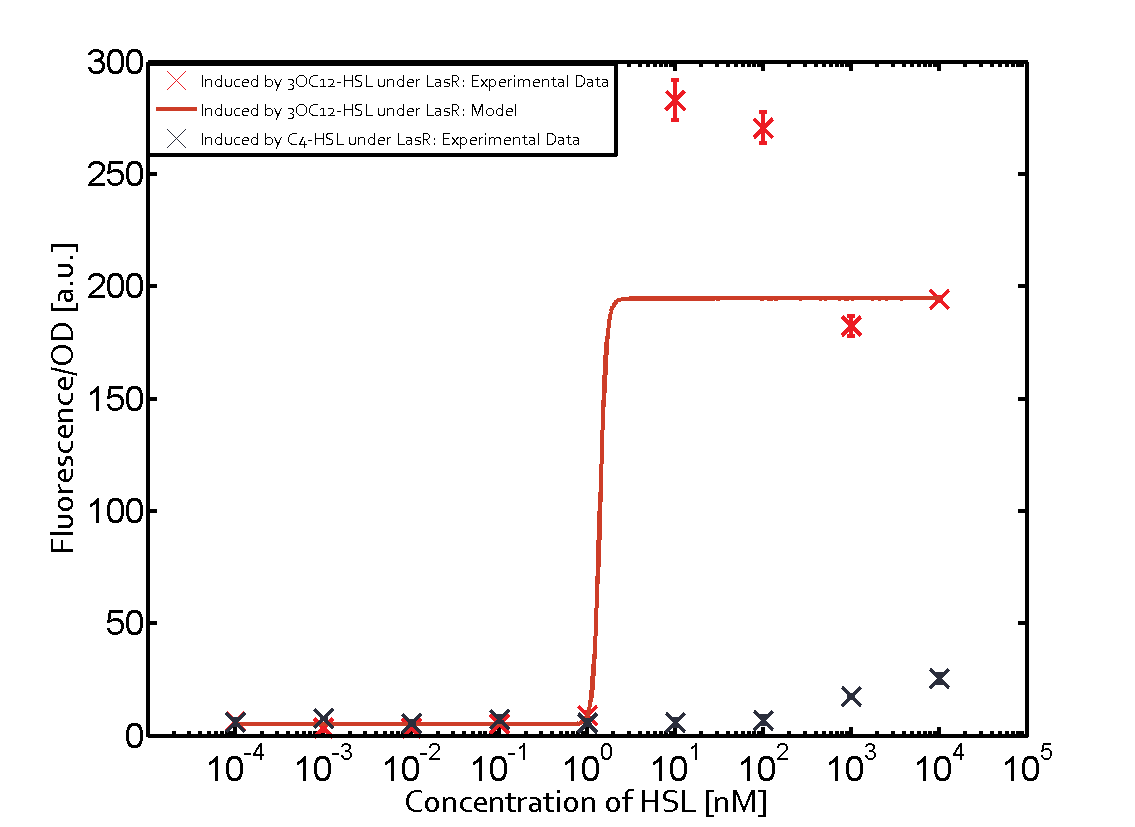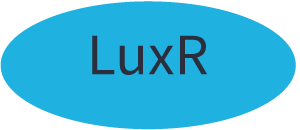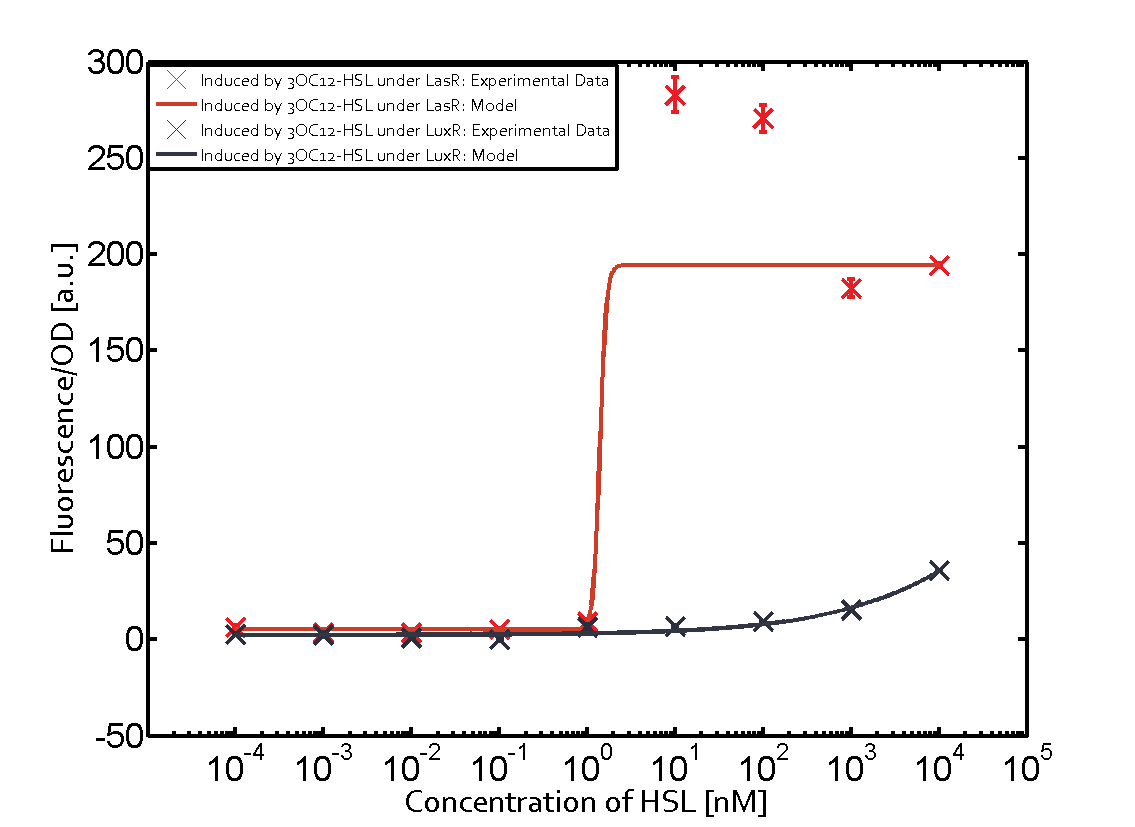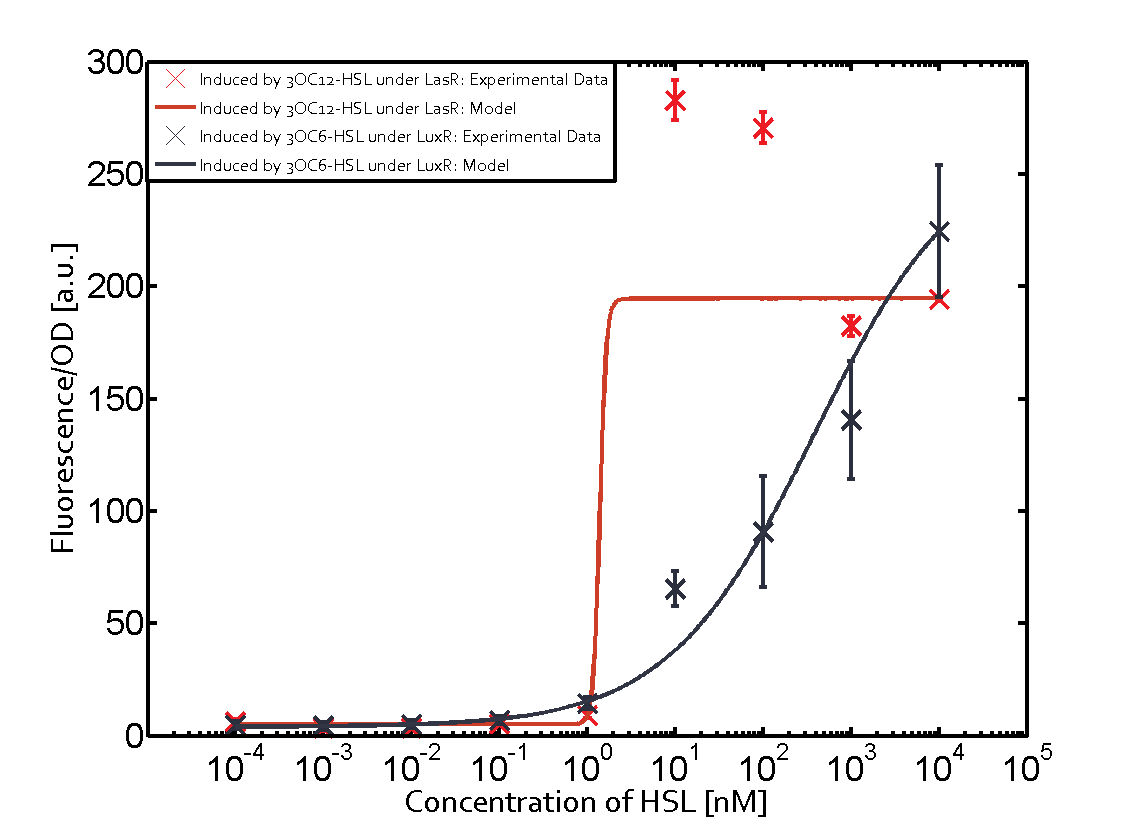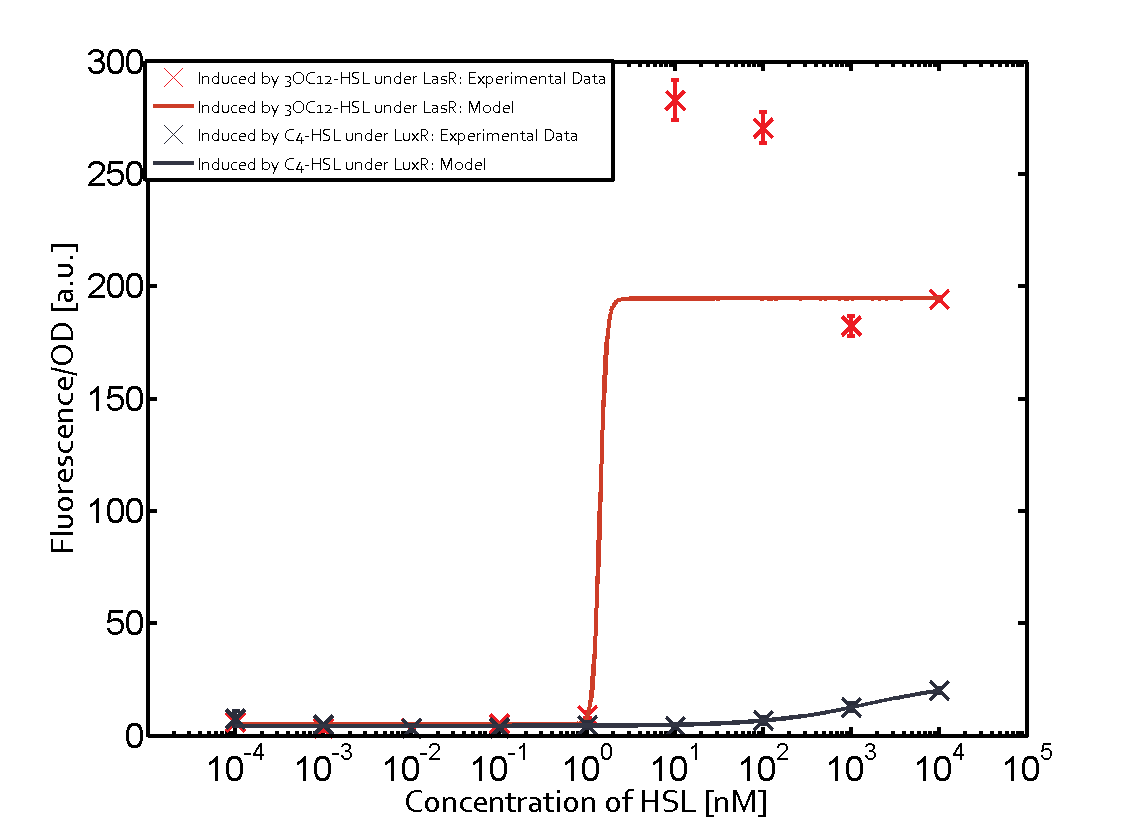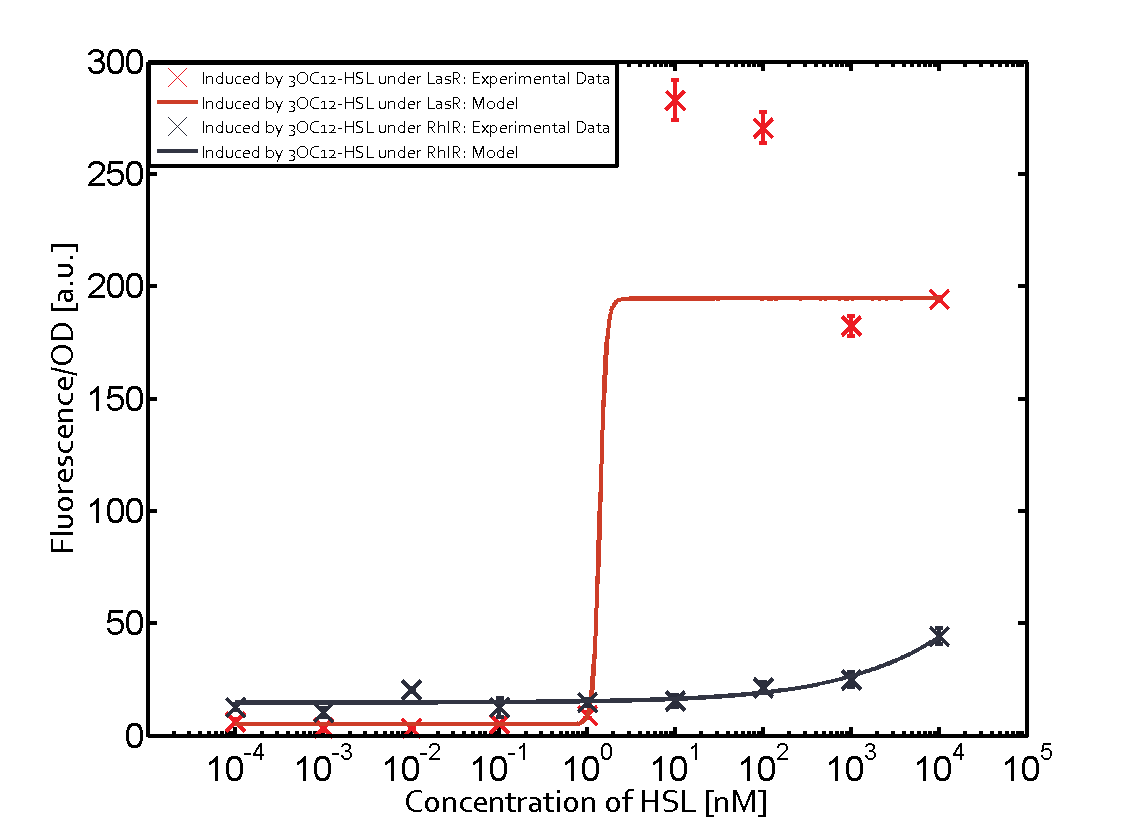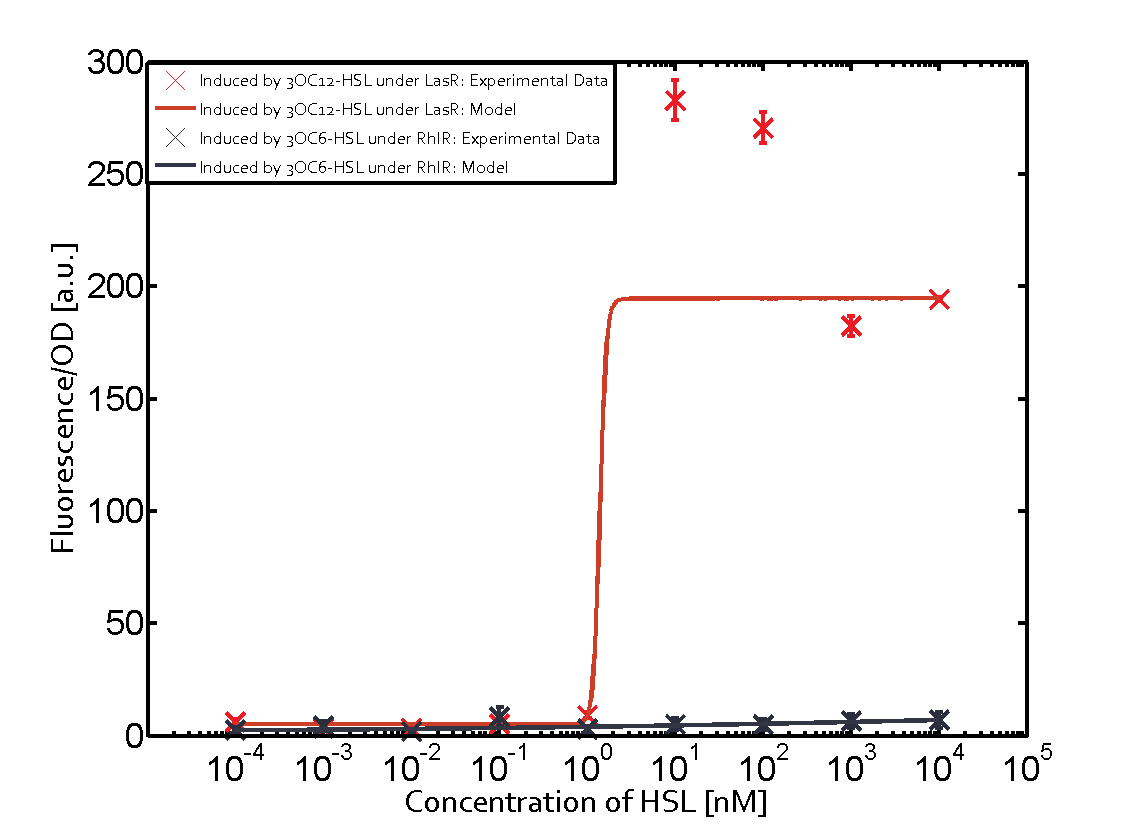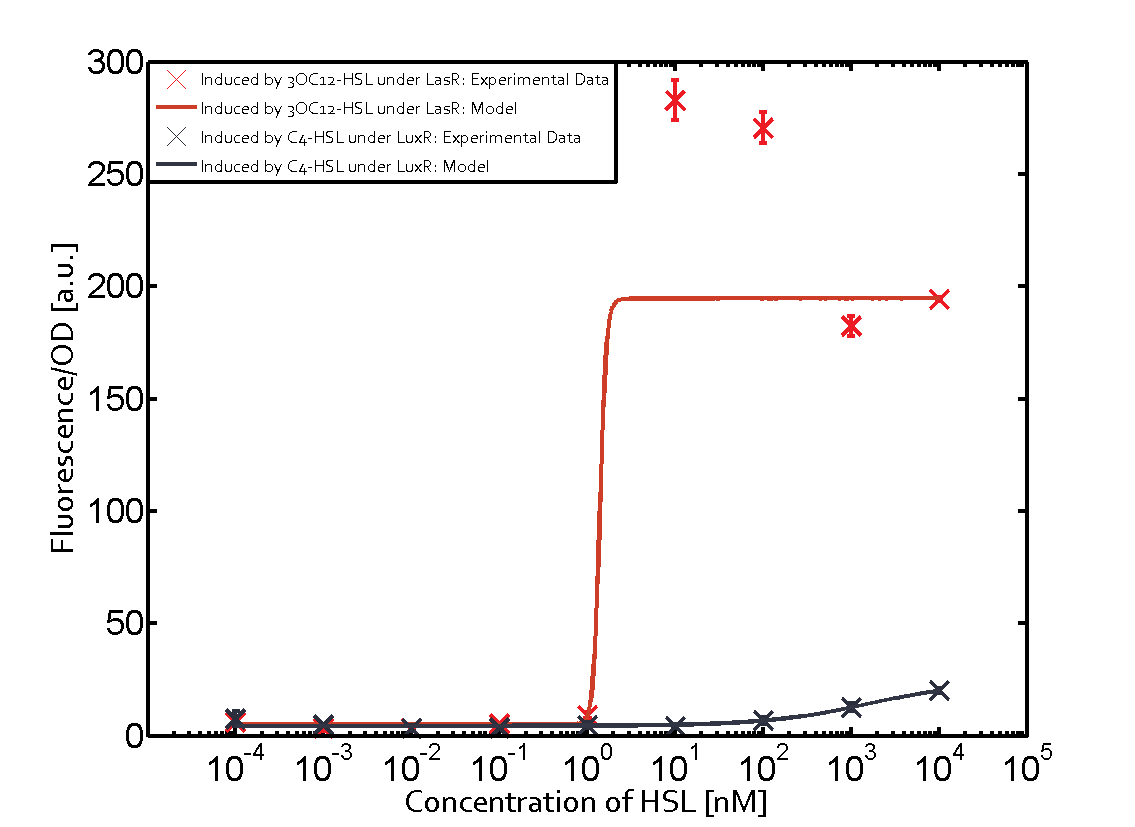Team:ETH Zurich/expresults/qs/tab-plas
From 2014.igem.org
(Difference between revisions)
| Line 2: | Line 2: | ||
|+'''Table 2''' Crosstalk matrix for the promoter plas ([http://parts.igem.org/Part:BBa_R0079:Experience BBa_R0079]) | |+'''Table 2''' Crosstalk matrix for the promoter plas ([http://parts.igem.org/Part:BBa_R0079:Experience BBa_R0079]) | ||
| - | |colspan="4" style='font-size:10pt';text-align:left|The promoter of interest | + | |colspan="4" style='font-size:10pt';text-align:left| |
| + | The promoter of interest in this matrix is pLas(ref). The graph on top left corner shows the induction of pLux(ref) by its corresponding inducer (3OC12-HSL) binding the corresponding LasR. The red line shows the model whereas the datapoints shown in red represent the experimental results. The transition can be observed at a concentration of Las-AHL of about 2 nM. 3OC6-HSL binding RhlR does not induce the pLas. For the binding of 3OC12-HSL to RhlR a minor increase of fluorescence can be observed. The same can be observed for 3OC12-HSL binding to the LuxR as this combination is to a small degree inducing pLas. The most significant case of crosstalk when observing pLas is shown in the graph in the center of the matrix. It is clearly shown that 3OC6-HSL (Lux-AHL) binding to the corresponding LuxR regulator is able to induce pLas, resulting in fluorescence values of about 250 a.u.. This is the most severe case of crosstalk observed as the induction of pLas by the corresponding inducer and regulator molecule is not significantly different measured by fluorescence as induction by Lux-AHL binding the LuxR and subsequently pLas. | ||
| + | For C4-HSL binding the three regulators LasR, LuxR and RhlR and then the pLas no crosstalk can be observed. | ||
|- | |- | ||
 "
"

